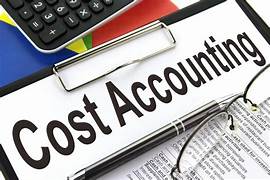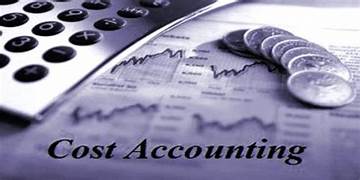What are the purposes of cost accounting?
What is cost accounting?
It is a form of managerial accounting to assess and calculate the cost of production using variable and fixed costs incurred during every step of the cost of production of products. The manufacturing industry uses cost accounting mainly to set prices without incurring a loss to the company. If the company does not use cost accounting in manufacturing the product, it might incur a loss by underpricing or lack of sales due to overpricing. Therefore, calculating the ideal price for the product or service using the cost accounting principles.
What are the purposes of cost accounting?
Different types of costs are involved in running the business, as follows.
- Fixed costs and variable costs
- Direct and indirect costs.
Fixed cost
It does not change regardless of the amount of production, e.g., Rent & rates.
Variable costs
It depends on the amount of output on production.
Direct & indirect costs
The expenses that directly go into the production of the product and indirect costs are business expenses.
- Direct costs are labor, materials commissions, and wages for quality checks.
- Indirect costs are wages, salaries, and supervision costs. They record expenses as soon as they incur to produce the management’s financial statement to become aware of the costs incurred in making a product or the services.
- What are the purposes of cost accounting?
To ascertain costs
The primary objective of cost accounting is to ascertain the cost of the cost center. Calculating costs is the Process of determining costs after they have been incurred. There are two methods to calculate costs – Job costing and Process costing. Different industries follow different ways of costing because of the difference in their activity.
To control costs
Cost accounting aims at controlling costs by using various techniques such as budgetary control, standard costing, Inventory control, etc., and setting a budget for the manufacturing cost used to make comparisons also in price settings.
To provide information for decision-making.
Cost accounting aims at providing information for various managerial decisions.
- Is it feasible to make or buy components?
- Deciding to retain or replace an existing machine
- Whether to process further or not
- Is it necessary to shut down or continue operations?
Selling price
Cost accounting provides information to determine the selling price of products or services. During the depression, it guides the management to decide, “How much reduction in selling price can make to meet the situation?” Setting the price to cover the costs and aligning with the competitor’s pricing structure is essential.
Costing profit
Cost accounting aims to ascertain the costing profit or loss of any activity on an objective basis by matching cost with that activity’s revenue.
Efficient cost accounting methods will show the company where the money is going, how you spend it, and whether it is lost. The elements of Cost accounting in the production industry are:
- Materials; are used as a substance to make the product into a finished product.
- Labor; Payment for the people who convert the materials into the finished product.
- Expenses: Indirect expenses
- Overheads: Factory overheads.
Cost analysis
It is all about studying the behavior of cost concerning various production criteria like the scale of operations, prices of production factors, size of output, etc. It is all about the financial aspects of production.
Plumbers and carpenters are good examples of businesses that use cost accounting. Because every job is different, assigning material, labor, and overhead costs to each customer’s job is essential.
What are the purposes of cost accounting?

A business that uses cost accounting
Process costing
Companies use Process costing when partially completed units move from one production area to another. They produce a sub-product and then pass that on to another department to make the finished product.



